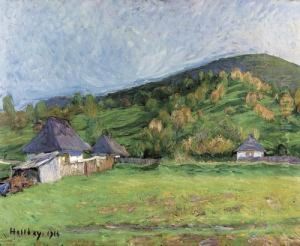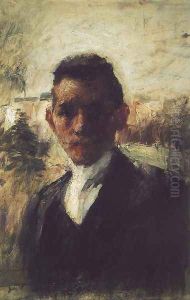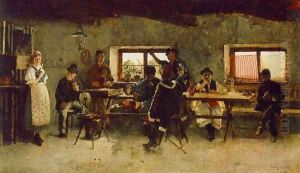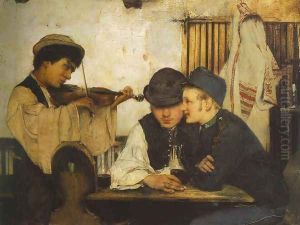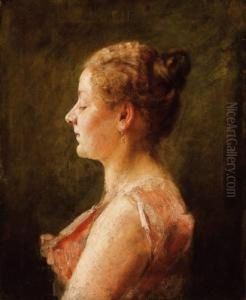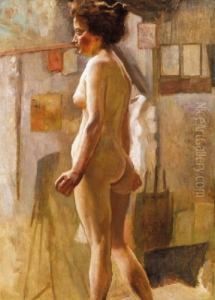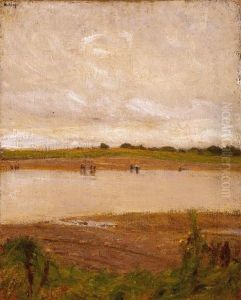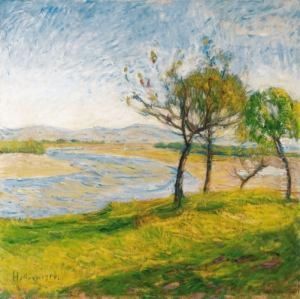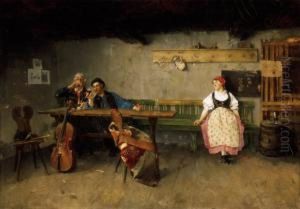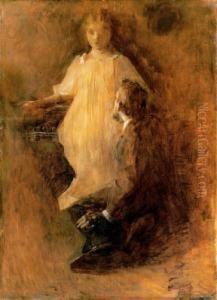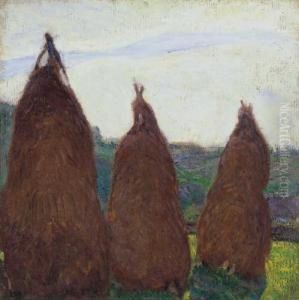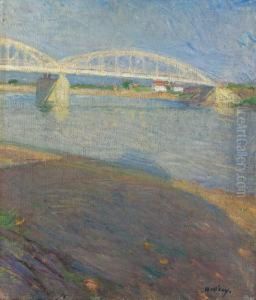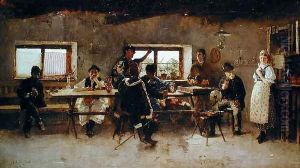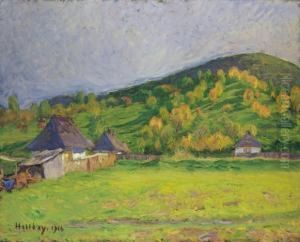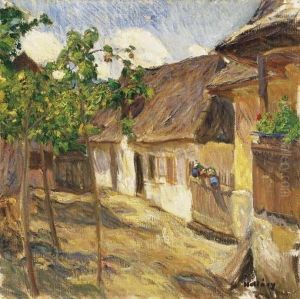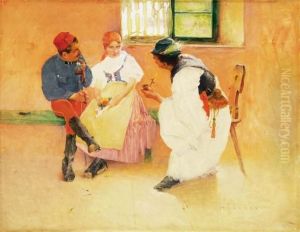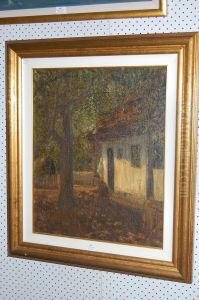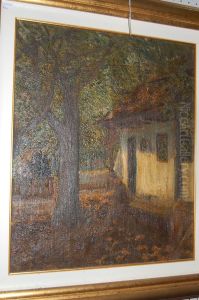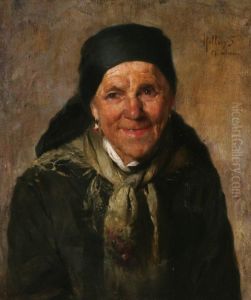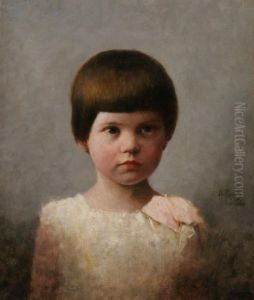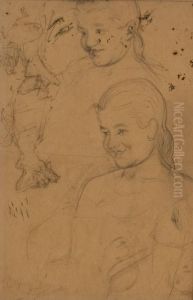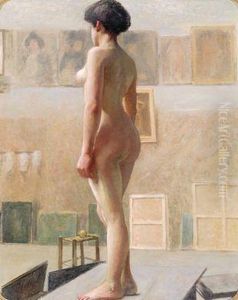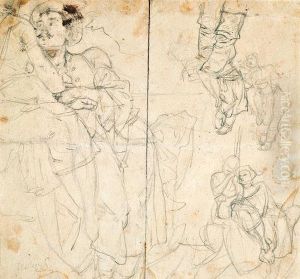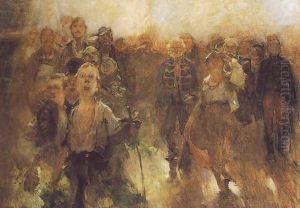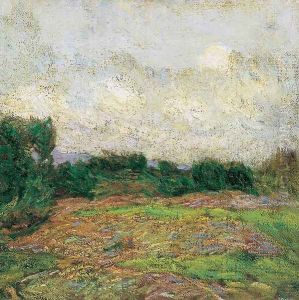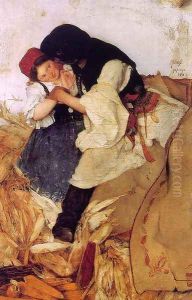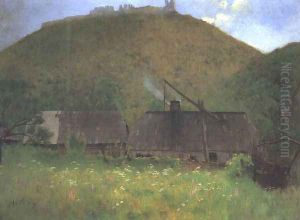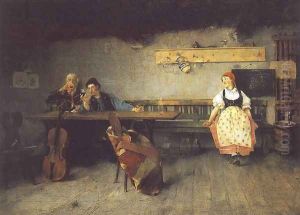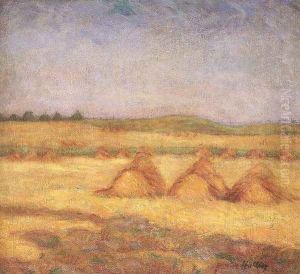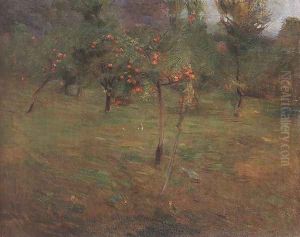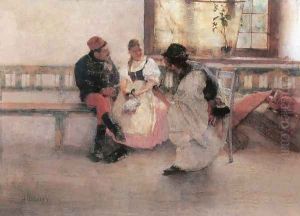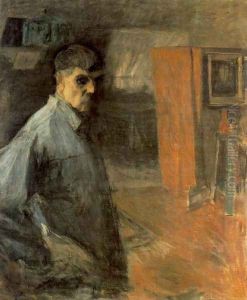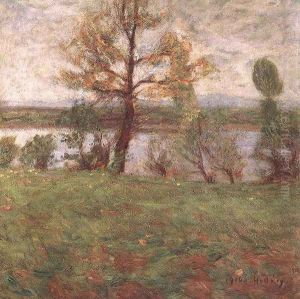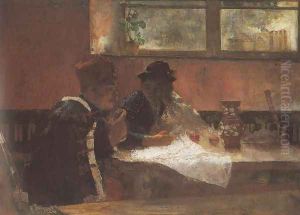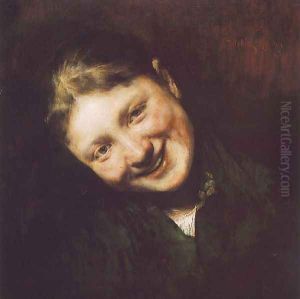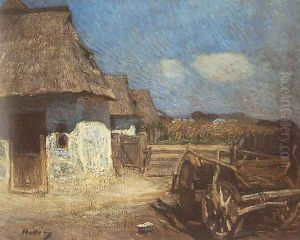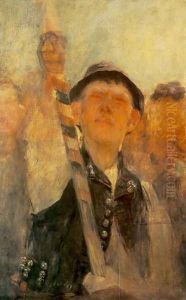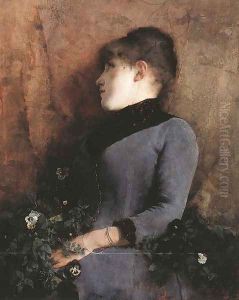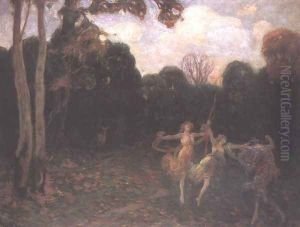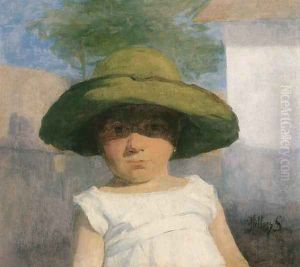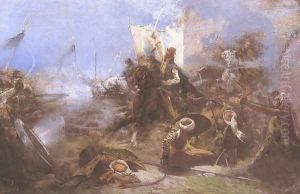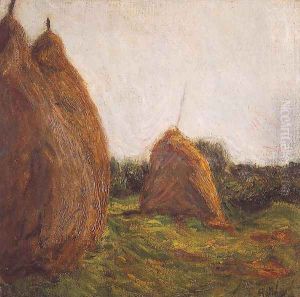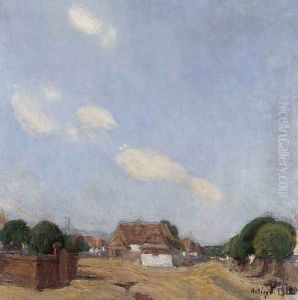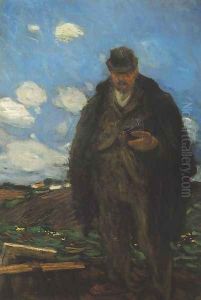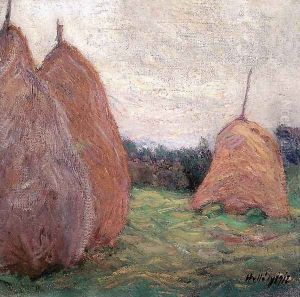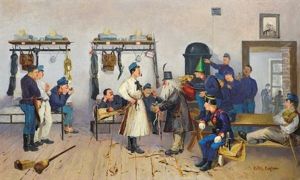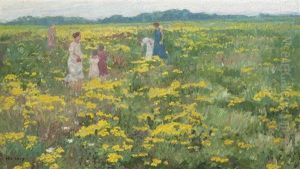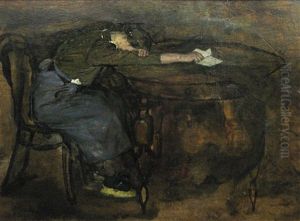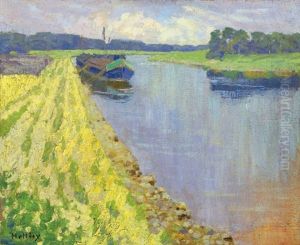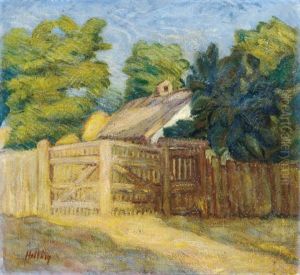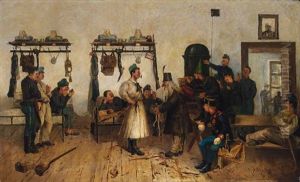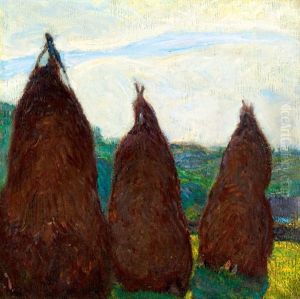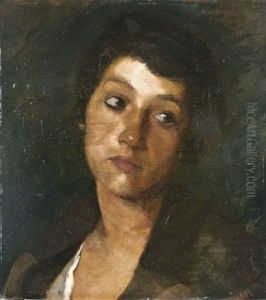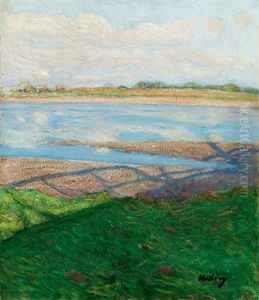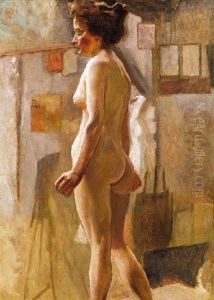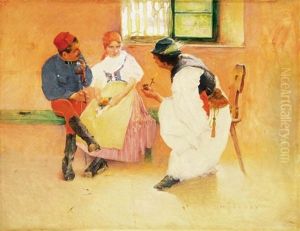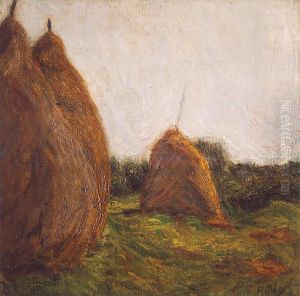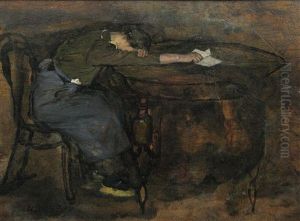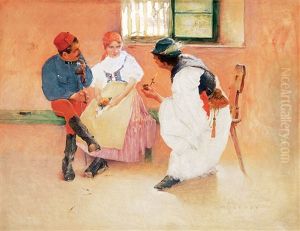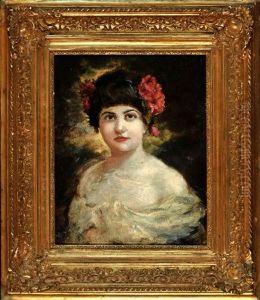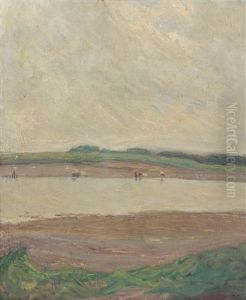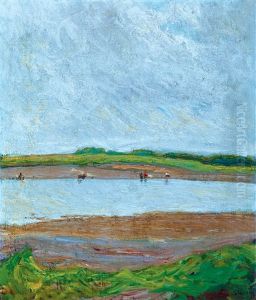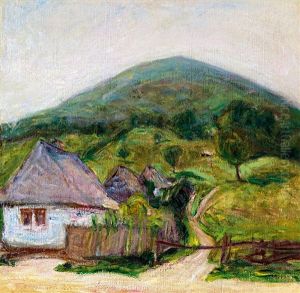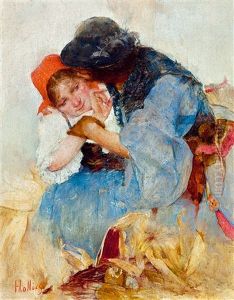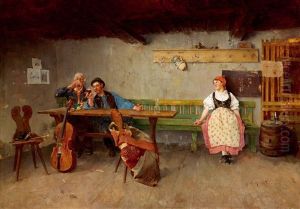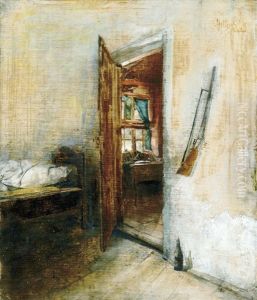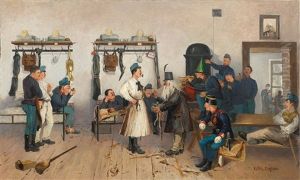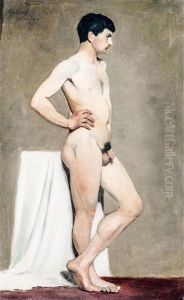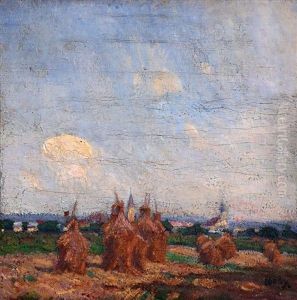Simon Hollosy Paintings
Simon Hollosy was a Hungarian painter, born on 2 February 1857 in Temesvár, then part of the Austro-Hungarian Empire (now Timișoara, Romania). He is often recognized for his influence on Hungarian art, particularly in fostering naturalism and plein air painting techniques among his students.
Hollosy showed an early aptitude for art and began his education at the Munich Academy of Fine Arts in 1876. Munich was a major art hub at the time, attracting many artists from Eastern and Central Europe. Under the guidance of prominent teachers such as Wilhelm Lindenschmit the Younger and Ludwig von Löfftz, Hollosy honed his skills and absorbed the tenets of Realism and Naturalism, which were predominant in German art circles.
He became a central figure in the Nagybánya artists' colony (now Baia Mare in Romania), which was founded in 1896 and became a cradle for modern Hungarian painting. Hollosy advocated for the practice of painting en plein air (outdoors), a method that allowed for a direct study of light, atmosphere, and natural conditions. This approach was inspired by French Impressionists and was revolutionary for Hungarian art at the time.
Through his teaching and his own works, Hollosy emphasized the importance of depicting peasant life and rural landscapes with sincerity and a naturalistic approach. His style evolved from the academic traditions to a more liberated brushwork, capturing the essence of the subject matter rather than focusing on meticulous detail.
Hollosy's impact on Hungarian art extends beyond his paintings. As a teacher, he influenced a generation of Hungarian artists, including István Réti, János Thorma, and István Csók, who would go on to shape the direction of Hungarian painting in the 20th century.
The outbreak of World War I and the subsequent turmoil in Europe deeply affected Hollosy. He moved to Csucsa in the Carpathian Mountains for health reasons and lived there in relative isolation. Simon Hollosy passed away on 28 April 1918 in Csucsa. His legacy is preserved in his numerous landscapes and genre paintings, as well as in the lasting impact he made on Hungarian art education and the Nagybánya artists' colony.
